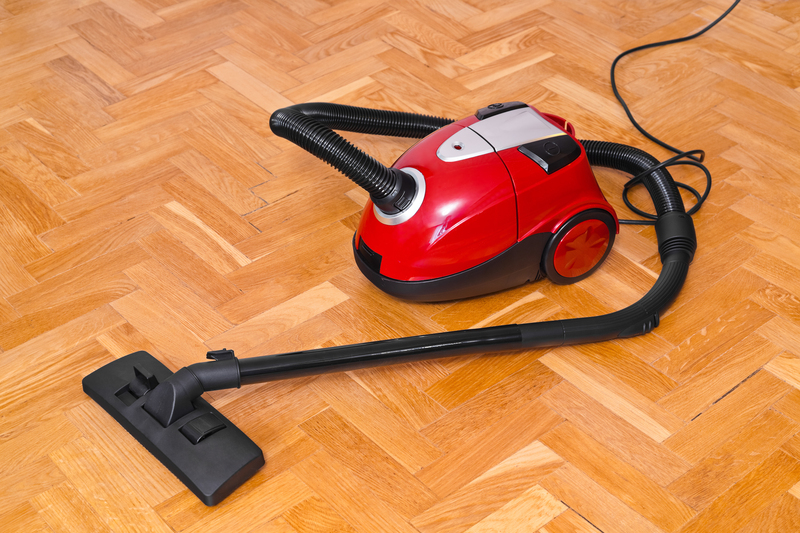Transform Your Cleaning Routine for Streak-Free Windows
Posted on 15/06/2025
Transform Your Cleaning Routine for Streak-Free Windows
Are you frustrated with streaky, cloudy windows despite your best cleaning efforts? Many homeowners struggle to achieve those sparkling, crystal-clear panes they see in magazines. Windows are a home's eyes to the world, and there's nothing quite as satisfying as gazing through pristine, streak-free glass. If you've been wondering how to transform your cleaning routine for streak-free windows, you've come to the right place. In this comprehensive guide, we'll break down the secrets, tips, tools, and methods that professionals use. By the end, you'll have all the knowledge you need for flawlessly clean, streak-free glass--every time.
Why Streak-Free Windows Matter
Clean windows do more than boost curb appeal. Streak-free windows:
- Maximize natural light: Let more sunshine in for a brighter, more inviting interior.
- Enhance views: Enjoy clear, undistorted vistas from every room.
- Improve indoor air quality: Remove dust, allergens, and other particles that gather on glass surfaces.
- Showcase your attention to detail: Clean, streak-free windows indicate a well-maintained home or business.
It's clear that the benefits of streak-free windows go beyond simple aesthetics. But achieving that flawless result is a blend of technique, timing, and the proper products.

Common Causes of Streaky Windows
- Using the wrong cleaner: Some glass cleaners leave behind residue, especially those with ammonia or dyes.
- Dirty cleaning tools: Reusing old, dirty cloths or squeegees can redeposit grime.
- Washing in direct sunlight: Sunlight dries cleaning solution too quickly, causing streaks.
- Skipping rinsing and drying: Not removing all solution or water can leave behind streaks and spots.
Understanding why streaks form is the first step in learning how to get streak-free windows every time.
Essential Tools & Supplies for Crystal-Clear Windows
Before you start, gather the right tools for the job. Investing in quality equipment makes all the difference when it comes to achieving streakless results:
- Microfiber cloths: These trap dirt and dust, and won't leave lint behind.
- Professional squeegee: A sturdy squeegee with a new rubber blade is key for smooth, streak-free removal of cleaning solution.
- Buckets: Use one for your cleaning solution and another for rinsing.
- Spray bottle: For mixing and applying your window cleaning solution.
- Soft-bristled brush: Ideal for scrubbing away tough grime before polishing.
- Extension pole: For reaching high or awkward windows safely.
With these materials, you're well on your way to streak-free window cleaning.
The Best Cleaning Solutions for Streakless Windows
1. Commercial Window Cleaners
High-quality, ammonia-free commercial solutions can be effective--just check labels for residue-causing ingredients. Products labeled "streak-free" are usually reliable, but still require proper technique for the best results.
2. DIY Homemade Solution for Streak-Free Glass
For many, the best window cleaning solution is homemade, natural, and affordable. Here's a recipe that delivers professional results:
- 2 cups warm water
- 1/4 cup white vinegar
- 1/2 teaspoon liquid dish soap
Mix in a spray bottle, shake gently, and apply. Vinegar cuts through grease and buildup, while dish soap dissolves dirt. Never mix vinegar with ammonia-based products as this creates hazardous fumes.
Step-By-Step Routine for Streak-Free Window Cleaning
Ready to transform your cleaning routine to achieve streak-free windows? Follow these steps for best results:
Step 1: Remove Dust and Cobwebs
Start by dusting the frame and surrounding area with a dry microfiber cloth or a soft dusting brush. This prevents dragging dirt onto the glass.
Step 2: Wash the Window Frame
Dampen another cloth with water and a small amount of mild detergent. Wipe the window frame, ledge, and hardware. Avoid getting excess water inside tracks or seams.
Step 3: Apply Your Cleaning Solution
Spray your chosen cleaner directly onto the glass. For larger panes, apply liberally across the entire surface. For smaller windows, spray onto the cloth to prevent drips.
Step 4: Wash with Microfiber or Soft Cloth
Use a clean microfiber cloth to gently rub the solution in circles, lifting away dirt, grease, and fingerprints. For very dirty windows, rinse and wring your cloth frequently.
Step 5: Squeegee for a Streakless Shine
Hold your squeegee at a slight angle--not flat against the glass. Start at the top and draw down in a straight line. Wipe the blade with a lint-free cloth after each downstroke.
- For tall windows: Overlap each stroke slightly to avoid missed spots.
- For small windows: Use horizontal or vertical strokes as needed.
Step 6: Final Touches
Wipe off any remaining drops or solution from edges with a clean, dry microfiber cloth. Double-check in daylight for missed streaks or smudges.
Pro Tips for Streak-Free Window Cleaning Success
- Don't clean windows in full sun: Early morning or cloudy days are best to ensure your cleaner doesn't dry before you squeegee it away.
- Always use a clean squeegee: Replace blades regularly. A dull or chipped blade will drag, causing streaks.
- Use distilled water in hard-water areas: Minerals in tap water can leave spots or streaks.
- Buff with a dry microfiber: For stubborn spots, a light buff with a fresh dry cloth delivers a flawless finish.
- Use different cloths for inside and outside: This prevents outdoor dirt from being spread indoors.
Tackling Special Window Types
1. Double-Paned Windows
If you notice moisture or streaks between panes, it's a sign of failing seals, which should be addressed professionally. Otherwise, clean inside and outside glass as normal for best results.
2. Tinted or Decorative Glass
Use only ammonia-free solutions on tinted windows to prevent damage. Avoid abrasive pads that can scratch decorative or textured glass.
3. High or Difficult Windows
Always use a sturdy ladder or telescoping pole for safety. Avoid leaning out dangerously--often, extension tools can provide professional-quality streak-free window cleaning for even the most awkward glass.
How Often Should You Clean Your Windows?
The frequency depends on your environment:
- Urban areas: Every 1-2 months, as pollution accumulates quickly.
- Rural or coastal areas: Every 3-4 months, especially if you're near sand, salt, or pollen-producing trees.
- Inside windows: At least twice a year, or more often if you have kids or pets.
Set reminders on your calendar to keep your window cleaning routine on track--regular care makes each cleaning easier and keeps glass crystal-clear year-round.
Common Mistakes to Avoid for Streak-Free Glass
- Using paper towels or newspaper: These can break down, leaving lint, and some modern inks no longer work for the "old newspaper trick."
- Spraying too much solution: Excess liquid increases the risk of streaks. Use a fine mist.
- Not cleaning window screens: Dirty screens shed dust back onto your clean glass.
- Ignoring window tracks: Clogged tracks can cause buildup and mold--wipe them during each cleaning.
The Environmental Side of Streak-Free Cleaning
More people are looking for eco-friendly ways to clean windows without streaks. Vinegar-based solutions, reusable microfiber cloths, and careful use of water all reduce your cleaning's carbon footprint. Dispose of old blades responsibly, and choose glass cleaners that are non-toxic and safe for pets and plants.
Why Professional Window Cleaning Might Be Worth It
If your home has lots of tall or hard-to-reach windows, or if your windows haven't been cleaned in years, consider hiring a professional window cleaning service at least once a year. Professionals:
- Have the tools and expertise for streak-free results.
- Can safely access upper-story windows with proper equipment.
- Spot and alert you to problems like failed window seals or hard water stains.
Combine a yearly professional clean with regular DIY upkeep for best results.

Frequently Asked Questions about Streak-Free Window Cleaning
Can I use vinegar on all types of windows?
Yes, but avoid vinegar on tinted or specialty glass--check your window manufacturer's guidelines. Never use vinegar on stone sills or frames as it can damage stonework.
Why does my window look streaky after cleaning?
Streaks can result from detergent residue, dirty tools, or cleaning on a hot, sunny day. Always use clean, lint-free cloths and avoid letting solution dry before wiping.
What's the best cloth for drying windows?
Microfiber cloths are ideal--they're super absorbent, don't leave lint, and are reusable, making them more eco-friendly than single-use alternatives.
How can I remove hard water stains?
For stubborn mineral deposits, use a paste of water and baking soda or a commercial lime-scale remover intended for glass. Always test a small area first.
Final Thoughts: Make Your Windows Shine--Streak-Free!
Transforming your window cleaning approach ensures streak-free, sparkling results every time. All it takes is the right tools, techniques, and consistency. By following these expert tips, you'll enjoy unobstructed views and a brighter home or office. Above all, embrace the routine--regular attention makes the job easier and keeps streak-free windows achievable!
Ready to transform your cleaning routine? Start today and enjoy the world through beautiful, clear glass--no streaks attached.




